Related Research Articles

The Christian Church (Disciples of Christ) is a mainline Protestant Christian denomination in the United States and Canada. The denomination started with the Restoration Movement during the Second Great Awakening, first existing during the 19th century as a loose association of churches working towards Christian unity, then slowly forming quasi-denominational structures through missionary societies, regional associations, and an international convention. In 1968, the Disciples of Christ officially adopted a denominational structure at which time a group of churches left to remain nondenominational.

The Restoration Movement is a Christian movement that began on the United States frontier during the Second Great Awakening (1790–1840) of the early 19th century. The pioneers of this movement were seeking to reform the church from within and sought "the unification of all Christians in a single body patterned after the church of the New Testament."
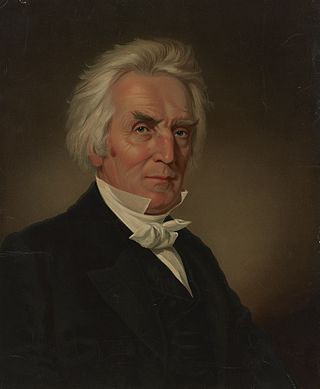
Alexander Campbell was a Scots-Irish immigrant who became an ordained minister in the United States and joined his father Thomas Campbell as a leader of a reform effort that is historically known as the Restoration Movement, and by some as the "Stone-Campbell Movement." It resulted in the development of non-denominational Christian churches, which stressed reliance on scripture and few essentials. Campbell was influenced by similar efforts in Scotland, in particular, by James and Robert Haldane, who emphasized their interpretation of Christianity as found in the New Testament. In 1832, the group of reformers led by the Campbells merged with a similar movement that began under the leadership of Barton W. Stone in Kentucky. Their congregations identified as Disciples of Christ or Christian churches.
The Churches of Christ, most commonly known as the Church of Christ or church of Christ, is a loose association of autonomous Christian congregations based on the sola scriptura doctrine. Their practices are based on Bible texts and draw on the early Christian church as described in the New Testament.
The group of churches known as the Christian Churches and Churches of Christ is a fellowship of congregations within the Restoration Movement that have no formal denominational affiliation with other congregations, but still share many characteristics of belief and worship. Churches in this tradition are strongly congregationalist and have no formal denominational ties, and thus there is no proper name that is agreed to apply to the movement as a whole. Most congregations in this tradition include the words "Christian Church" or "Church of Christ" in their congregational name. Due to the lack of formal organization between congregations, there is a lack of official statistical data, but the 2016 Directory of the Ministry documents some 5000 congregations in the USA and Canada; some estimate the number to be over 6,000 since this directory is unofficial.
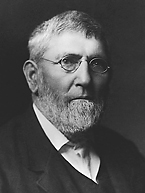
David Lipscomb was a minister, editor, and educator in the American Restoration Movement and one of the leaders of that movement, which, by 1906, had formalized a division into the Church of Christ and the Christian Church. James A. Harding and David Lipscomb founded the Nashville Bible School, now known as Lipscomb University in honor of the latter.
The Springfield Presbytery was an independent presbytery that became one of the earliest expressions of the Stone-Campbell Movement. It was composed of Presbyterian ministers who withdrew from the jurisdiction of the Kentucky Synod of the Presbyterian Church in the United States of America on September 10, 1803. It dissolved itself on June 28, 1804, with the publication of a document titled the Last Will and Testament of The Springfield Presbytery, marking the birth of the Christian Church of the West.
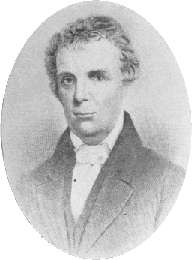
Barton Warren Stone was an American evangelist during the early 19th-century Second Great Awakening in the United States. First ordained a Presbyterian minister, he and four other ministers of the Washington Presbytery resigned after arguments about doctrine and enforcement of policy by the Kentucky Synod. This was in 1803, after Stone had helped lead the mammoth Cane Ridge Revival, a several-day communion season attended by nearly 20,000 persons.
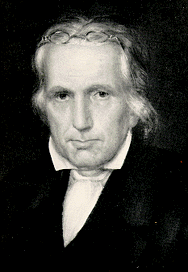
Thomas Campbell was a Presbyterian minister who became prominent during the Second Great Awakening of the United States. Born in County Down, he began a religious reform movement on the American frontier. He was joined in the work by his son, Alexander. Their movement, known as the "Disciples of Christ", merged in 1832 with the similar movement led by Barton W. Stone to form what is now described as the American Restoration Movement.
The Brush Run Church was one of the earliest congregations associated with the Restoration Movement that arose during the Second Great Awakening of the early 19th century. In 1811, a congregation of Christian reformers known as the Christian Association of Washington (Pennsylvania) reconstituted itself as a church and constructed a new building to replace the temporary log building where they began. Because it was built on the farm of William Gilchrist, near a stream called Brush Run, both the building and the congregation became known as Brush Run Church. It was the center of activity for Thomas and Alexander Campbell, father and son respectively, in their movement for Christian reform on the American frontier. The meeting house was later used as a blacksmith shop, then as a post office and finally it was moved to Bethany, Virginia.
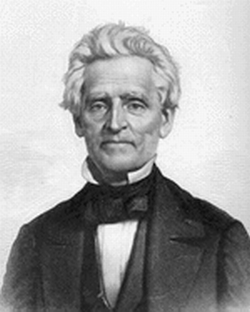
"Raccoon" John Smith was an early leader in the Restoration Movement. His father, George Smith was of German ancestry, and may have been born in Germany, while his mother, Rebecca Bowen Smith, was of Welsh and Irish ancestry. He played a critical role uniting the movement led by Thomas and Alexander Campbell with the similar movement led by Barton W. Stone and in spreading the message of the movement over much of Kentucky.
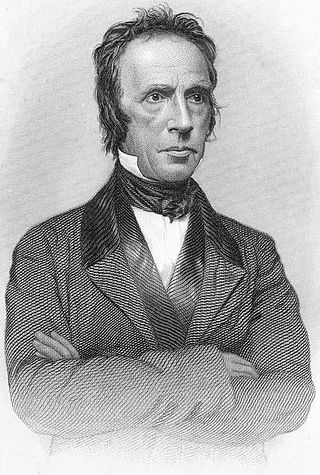
Walter Scott was one of the four key early leaders in the Restoration Movement, along with Barton W. Stone, Thomas Campbell and Thomas' son Alexander Campbell. He was a successful evangelist and helped to stabilize the Campbell movement as it was separating from the Baptists.
The Christian Association of Washington was an organization established by Thomas Campbell in 1809 to promote Christian unity. It was a study group that Campbell formed with like minded friends and acquaintances in the local neighborhood of Washington, Pennsylvania. The group sought to foster unity by focusing on a common form of Christianity that they could all agree upon. This charter that Campbell wrote for this group, the Declaration and Address of the Christian Association of Washington, became one of the most important early texts of the Restoration Movement.
The Christians (Stone Movement) were a group arising during the Second Great Awakening of the early 19th century. The most prominent leader was Barton W. Stone. The group was committed to restoring primitive Christianity. It merged with the Disciples of Christ (Campbell Movement) in 1832 to form what is now described as the American Restoration Movement (also known as the Stone-Campbell Restoration Movement.)
The Disciples of Christ were a group arising during the Second Great Awakening of the early 19th century. The most prominent leaders were Thomas and Alexander Campbell. The group was committed to restoring primitive Christianity. It merged with the Christians in 1832 to form what is now described as the American Restoration Movement.
The Millennial Harbinger was a religious magazine established by the early Restoration Movement leader Alexander Campbell in 1830. Campbell viewed the magazine as an important vehicle for promoting the religious reforms that he believed would help usher in the millennium.
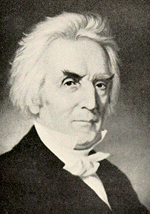
The Christian Baptist, established in 1823 by Alexander Campbell, was the first magazine associated with the early Restoration Movement. The prospectus for the Christian Baptist described its purpose as "[to] espouse the cause of no religious sect, excepting that ancient sect called 'Christians first at Antioch.' Its sole object shall be the eviction of truth, and the exposure of error in doctrine and practice." The style has been described as "lively" and "sarcastic". Campbell discontinued the Christian Baptist in 1830 and began publishing a new journal named the Millennial Harbinger which had a "milder tone".
The Living Oracles is a translation of the New Testament compiled and edited by the early Restoration Movement leader Alexander Campbell. Published in 1826, it was based on an 1818 combined edition of translations by George Campbell, James MacKnight and Philip Doddridge, and included edits and extensive notes by Campbell.
The Mahoning Baptist Association was an association of Baptist churches that was established in 1820 in Ohio's Mahoning Valley. Two prominent early Restoration Movement leaders, Alexander Campbell and Walter Scott, were closely affiliated with the Mahoning Association. The Association was dissolved in 1830.
The Churches of Christ in Europe are Christian groups of autonomous congregations using the name "church of Christ" which may or may not have a historical association with the Restoration Movement. These groups are characterized by an emphasis on basing doctrine and practice on the Bible alone in order to restore the New Testament church they believe to have been established by Jesus.
References
- 1 2 3 4 5 6 Douglas Allen Foster and Anthony L. Dunnavant, The Encyclopedia of the Stone-Campbell Movement: Christian Church (Disciples of Christ), Christian Churches/Churches of Christ, Churches of Christ, Wm. B. Eerdmans Publishing, 2004, ISBN 0-8028-3898-7, ISBN 978-0-8028-3898-8, 854 pages, entry on Redstone Baptist Association, pp. 628-629
- ↑ Davis, M. M. (1915). How the Disciples Began and Grew, A Short History of the Christian Church, Cincinnati: The Standard Publishing Company
- 1 2 McAlister, Lester G. and Tucker, William E. (1975), Journey in Faith: A History of the Christian Church (Disciples of Christ), St. Louis, MO: Chalice Press, ISBN 978-0-8272-1703-4